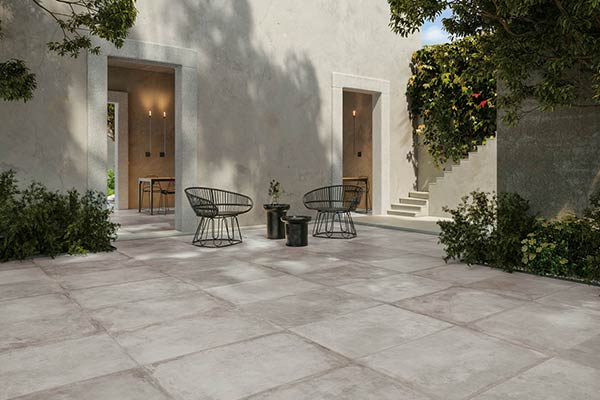
It’s hard to do without glue when renovating. The same goes for laying outdoor tiles. It will be just as difficult to get the job done without leaving residues of this substance. These are stubborn stains that are very difficult to get rid of. The best thing to do is to call in a craftsman to do it.
However, there’s nothing to stop you removing the glue from your tiles yourself, provided you’re a handyman. We’ll be giving you some effective tips on how to do just that. What’s more, if you want to lay your floor covering yourself like a pro without risking getting it dirty, don’t hesitate to consult our advice on laying outdoor tiles.
How to remove adhesive from outdoor tiles
Known as “mortar adhesive”, tiling adhesive is different from those found elsewhere in the shops. It is used to seal tiles effectively and securely. Once the installation is complete, marks are inevitable. Here are the products, tools and techniques you can use to get rid of them.
The nail file
You probably have one of these around the house. A nail file is a very effective way of removing glue from tiles. It’s very easy to use. All you have to do is file the area where the substance is located. Just avoid reaching the tiles.
Once all the glue has crumbled away, use a hairdryer to heat up the remaining residue. You can also use an iron. Once this operation is complete, take a piece of cloth and wipe off the residue.
A cutter
A cutter will perform the same function as the nail file we were talking about. All you need to do is follow the same steps: gently scrape the part of the outside tiling where the glue is and wipe away the residue with a piece of cloth.
Acetone
This is another product that works wonders on glue marks on outdoor tiles. To use, follow these steps:
– Dip a piece of cloth lightly in acetone.
– Wipe off the glue residue with the cloth in question
– Rub vigorously
– Rinse with water when the trace disappears
If you don’t have acetone at home, you can use nail varnish remover to get rid of traces of glue on outdoor tiles. Alcohol will also do the trick.
White spirit
If the glue residue on the tiles is still there, you need to move up a gear. We recommend using White Spirit. This is a mineral spirit produced from a mixture of hydrocarbons. It helps to clean all kinds of objects. In your case, take a cloth soaked in White Spirit and dab the surface of the tiles concerned. Once the job is done, rinse with water.
Oven cleaners
Oven cleaning products are very effective for removing traces of glue from outdoor tiles. The instructions for use are simple. The first thing to do is to spray the tiles you intend to clean..
Then leave the cleaner to work for around ten minutes. Once this time has elapsed, simply wipe the tiles with a damp sponge.
Which tiles should you lay to decorate your outdoor areas?
Thanks to the tips we’ve just seen, you’ll have no trouble removing the glue from your outdoor tiles. This kind of accident is inevitable when laying tiles. Tiles also need to be well chosen to suit outdoor conditions. Find out about the main selection criteria to bear in mind.
Standards and characteristics
Outdoor tiles must comply with a number of criteria and standards. First of all, there’s the UPEC rating. This is an index that defines the product’s resistance to wear and tear, as well as its ability to resist puncturing, damp, water and chemicals. It ranges from 1 to 4. To guarantee optimum quality, it is best to choose the highest index, i.e. 4. Then there are other standards to comply with:
– The PEI standard: this provides information on the robustness of tiles in the face of bad weather and frost. We recommend that you choose tiles with a PEI rating of 4 or 5.
– R rating: this refers to the non-slip properties of outdoor tiles. It’s best to opt for tiles with an R9 rating. This is the minimum required, particularly for sheltered terraces. On the other hand, if the tiles are to be laid in an area that is constantly exposed to the elements, it’s better to choose R10 or R11 tiles.
The two questions you should ask yourself before laying outdoor tiles
Before laying outdoor tiles, it’s essential to ask yourself two main questions.
What thickness should I choose?
If you’re going to lay the tiles on a concrete slab, a <>standard thickness of around ten millimetres should be more than enough. On the other hand, if the tiles are going to be laid for garden paths, directly on the ground, on paving blocks or on a bed of gravel, they need to be about 2 centimetres thick to be hard-wearing.
Where do you plan to lay your outdoor tiles?
There are several scenarios. If it’s on a terrace, the tiles should match the front of the house, or even the inside tiles. If the area in question is often lit by the sun, avoid light-coloured coverings as they will reflect the light and dazzle you.
Are you planning to lay it around a swimming pool? If so, you’ll need tiles with anti-slip and water-repellent properties. This is essential to avoid accidental falls at the edge of the pool.

 Listen
Listen



